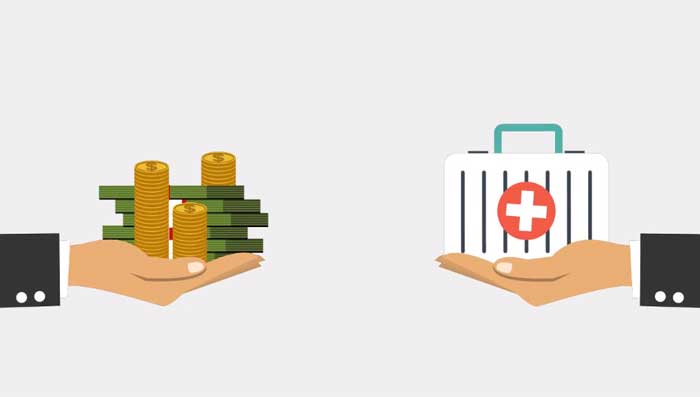
What is the Medicare Levy?
Have you ever looked at your Notice of Assessment (NOA) or tax refund estimate and seen a line for the Medicare Levy? Not sure what it is? Don’t worry, you’re not alone and this article has got you covered.
For most Australians, healthcare is essentially free. If you get sick, you can go to the hospital and it won’t cost you a cent. That’s because we have the Medicare Levy, which most people pay each week from their withheld tax. This levy goes towards funding hospitals, doctors, nurses and other health related costs that come with providing free healthcare to all Australians.
The Medicare Levy is often confused with the Medicare Levy Surcharge (MLS), which is a completely different charge to encourage those people who can afford it to take out private health cover. We cover more about this later in our blog.
Who pays the Medicare Levy?
If you earn more than $26,000 in the most recent tax year, you will pay the Medicare Levy. This is calculated quite simply, at 2% of your taxable income.
Here are some very simple examples:
- A part-time or casual employee who earned $20,000 pays zero towards the Medicare Levy.
- An employee earning $50,000 in the last tax year pays $1,000.
- An employee earning $100,000 will then pay $2,000 towards the Medicare Levy.
These amounts are all in addition to your regular income taxes, based on your tax bracket.
Can you avoid paying the Medicare Levy?
There are just two main ways to avoid paying the levy and they don’t apply to many Australians:
1. You’re a low-income earner
Some low-income earners (depending on your annual income) do not have to pay the levy, or they receive a reduction on the levy rate.
Low-income Medicare Levy thresholds
You do not pay the Medicare Levy if:
- Your income is equal to or less than $26,000 (or $41,089 if you’re entitled to the seniors and pensioners tax offset).
- Your family income is equal to or less than $43,846 (or $57,198 if you’re entitled to the seniors and pensioners tax offset).
Medicare Levy Reduction for singles:
You qualify for a reduced rate if your income is between $26,000 and $32,500 (between $41,089 and $51,361 if you’re entitled to the seniors and pensioners tax offset).
Medicare Levy Reduction for families
If your income is above the $43,846 threshold you may still qualify for a reduction based on your family income, if you meet one of the following criteria:
- Had a spouse (married or de facto)
- Had a spouse that died during the year, and you did not have another spouse before the end of the year
- Are entitled to an invalid carer tax offset for your child
- Had sole care of one or more dependent children.
You qualify for a reduced rate if your family income is between $43,846 and $54,807 (between $57,198 and $71,497 if you’re entitled to the seniors and pensioners tax offset).
The family income threshold increases by $5,034 for each dependent child.
2. You have a Medicare Entitlement Statement
This is a statement issued by Services Australia (formerly called the Department of Human Services), to people who are not entitled to received Medicare benefits based on their visa type. You can apply for a statement if you fit any one of the following categories:
- A temporary visa holder and you’re not eligible for Medicare under a reciprocal health care agreement,
- An Australian permanent resident who has lived outside Australia for 12 months or more,
- A temporary visa holder who hasn’t applied for permanent residency,
- A New Zealand citizen who lived in Australia for under 6 months within a 12 month period, or
- An Australian citizen who has lived overseas for 5 years or more.
How do I get a Medicare Levy Exemption (MLE)?
If you weren’t eligible for Medicare for all or part of the year, you can apply for an exemption. The exemption means you don’t pay the Medicare levy for all or part of that year.
So if you have an entitlement statement, be sure to complete the “Medicare Levy Exemption” on your tax return, which allows you to avoid paying the levy.
You or your tax agent can apply for a Medicare entitlement statement. Find more information on the Services Australia website here.
Important: You need the entitlement statement before you do your tax return. Otherwise, you will still need to pay the Medicare Levy.
I lodged my tax return without a Medicare Entitlement Statement
If you’ve already lodged your tax return, but you qualify for a Medicare Entitlement Statement, please contact us right away.
As long as your tax return was lodged within the last two years, we can submit an amended tax return to the ATO and get any Medicare Levy you already paid refunded to you.
So, you can reach out to us on [email protected] or 1300 693 829 and our team will talk you through the process.
What about the Medicare Levy Surcharge?
The Medicare Levy Surcharge is different to the Medicare Levy. It is a charge levied on medium and high-income earners who do not have private hospital cover. It ranges from 1-1.5% of your annual income. Please click here to read more about the Medicare Levy Surcharge.




